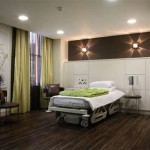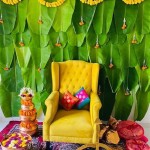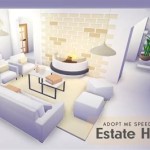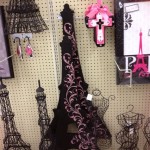How to Decorate Your Room in Rec Room
Rec Room provides a robust creative suite, allowing players to personalize their virtual spaces extensively. Decorating a room within Rec Room involves understanding available tools, utilizing design principles, and optimizing performance to ensure a positive user experience. This article will explore key aspects of room decoration, offering guidance on creating engaging and functional virtual environments.
Understanding the Rec Room Maker Pen and its Tools
The Maker Pen serves as the primary tool for room decoration in Rec Room. Familiarizing oneself with its functionalities is crucial for effective design. The Maker Pen interface includes various tools, each catering to different aspects of creation:
Shape Tool: This tool allows for the creation of basic geometric shapes such as cubes, spheres, cylinders, and cones. These shapes form the foundation for building structures, furniture, and decorative elements. The dimensions and properties of these shapes can be adjusted through the Maker Pen interface, enabling precise control over their appearance.
Connect Tool: This tool connects objects together, creating complex structures and ensuring that objects remain in their designated positions. Connecting objects optimizes performance by reducing the number of individual entities the game engine needs to process. It is particularly useful for constructing walls, floors, and interconnected furniture pieces.
Clone Tool: This tool duplicates existing objects, enabling the rapid creation of multiple instances of a particular element. Cloning is useful for creating symmetrical designs, replicating patterns, and quickly populating a room with furniture or decorative items. Maintaining consistency in object placement and orientation is essential for a polished look.
Palette Tool: This tool provides access to a wide range of materials, colors, and textures that can be applied to objects. Experimenting with different materials and colors is crucial for achieving a desired aesthetic. Rec Room offers options from photorealistic textures to stylized, cartoon-like appearances. Proper material selection enhances the visual appeal and thematic consistency of the room.
Configure Tool: This tool allows for the adjustment of various object properties, including physics, collision, and interactions. Configuring objects properly is essential for creating a functional and engaging room. For instance, setting the "Is Walkable" property on a floor ensures that players can navigate the space seamlessly. Adjusting physics settings allows for the creation of interactive elements that respond to player actions.
Edit Tool: This enables modification and detailed adjustments to objects. The Edit tool allows for the precise placement and alignment of objects. This includes fine-tuning the position, rotation, and scale of objects. Advanced techniques such as vertex manipulation are also possible, allowing for the creation of custom shapes and intricate details.
Applying Design Principles in Rec Room
While technical proficiency with the Maker Pen is important, a strong understanding of design principles elevates room decoration from functional to aesthetically pleasing. Key design principles to consider include:
Balance: Balance refers to the visual equilibrium of a room. Symmetrical balance involves mirroring elements on either side of a central axis, creating a sense of formality and order. Asymmetrical balance, conversely, involves arranging elements of differing visual weight to achieve equilibrium, resulting in a more dynamic and informal composition. Achieving balance prevents a room from feeling cluttered or unbalanced.
Proportion and Scale: Proportion refers to the relative size and scale of objects in relation to each other and the overall room. Maintaining proper proportion ensures that elements feel harmonious and visually coherent. Avoid placing excessively large or small objects in relation to the surrounding environment. Scale relates to the size of objects relative to the human form. Consideration of scale is important for creating comfortable and functional environments.
Color Theory: Color significantly impacts the mood and atmosphere of a room. Understanding color theory is crucial for creating visually appealing and emotionally resonant spaces. Employing a color palette based on established principles, such as complementary or analogous colors, enhances the visual harmony of a room. Consider the psychological effects of different colors when selecting a palette. Warm colors evoke feelings of energy and excitement, while cool colors promote calm and relaxation.
Emphasis: Emphasis involves creating a focal point in the room, drawing the viewer's attention to a specific area or object. This can be achieved through various means, such as contrasting colors, unique shapes, or strategically placed lighting. A well-defined focal point adds visual interest and provides a sense of direction within the room.
Rhythm and Pattern: Rhythm refers to the repetition and variation of elements within a room, creating a sense of movement and visual interest. Patterns involve the systematic arrangement of elements, adding depth and complexity to the design. Employing patterns and rhythms strategically can enhance the visual appeal and thematic consistency of the room.
Negative Space: Negative space, or empty space, is as important as the objects within a room. Utilizing negative space effectively prevents a room from feeling cluttered and allows individual elements to stand out. Strategically incorporating negative space enhances the overall visual balance and clarity of the design.
Optimizing Rec Room Room Performance
Rec Room rooms are subject to performance limitations. Overly complex designs can lead to lag and reduced frame rates, detracting from the user experience. Optimizing room performance is essential for creating enjoyable and accessible virtual environments. Strategies for optimization include:
Chip Count Management: Rec Room limits the number of chips that can be used in a room. Chips are used to add interactivity and functionality to a room. Minimizing the number of chips is crucial for maintaining performance. Efficient scripting and code reuse reduce chip consumption. Consider using state machines or simplified logic to achieve desired functionality.
Object Count Reduction: Reducing the number of individual objects in a room improves performance. Utilize the Connect tool to combine multiple objects into a single entity. Employ LOD (Level of Detail) techniques by using simpler models for distant objects. Consider using textures and materials to simulate detail instead of creating complex geometry.
Polygon Optimization: Optimizing the polygon count of individual objects reduces rendering overhead. Avoid using excessively detailed models, especially for objects that are not directly interacted with. Utilize the Maker Pen's shape tools to create simplified versions of complex objects. Consider using techniques such as decimation to reduce the polygon count of imported models.
Lighting Optimization: Lighting significantly impacts performance. Minimize the number of dynamic lights in a scene, as they are computationally expensive. Utilize baked lighting techniques where possible to pre-calculate lighting effects. Optimize shadow settings to reduce rendering overhead. Experiment with different lighting modes to find the best balance between visual quality and performance.
Texture Optimization: Optimize the resolution and format of textures. Use compressed texture formats such as JPEG or PNG. Minimize the number of different textures used in a room by employing texture atlases. Avoid using excessively large textures, as they consume significant memory. Consider using procedural textures to reduce the need for large, high-resolution images.
Collision Optimization: Optimize the collision properties of objects. Use simplified collision meshes where possible. Avoid using complex collision meshes for objects that do not require precise collision detection. Consider disabling collision for decorative objects that do not need to be interacted with. Overly complex collision meshes can significantly impact performance.
Testing and Iteration: Regularly test the room on different platforms to identify performance bottlenecks. Use the Rec Room performance profiler to monitor CPU and GPU usage. Iterate on the design, making adjustments to optimize performance based on test results. Continuous optimization is crucial for creating a smooth and enjoyable user experience.
By understanding the Maker Pen's capabilities, applying fundamental design principles, and implementing performance optimization strategies, creators can effectively decorate Rec Room rooms, crafting engaging and immersive virtual experiences.

How To Customize Your Dorm Room Official Rec Guide

How To Rec Room Create A

Rec Room How To Customize Your Dorm Easy 2025 Simple Guide

Custom Rooms Rec Room Wiki Fandom

How To Customize Your Dorm Room Official Rec Guide

10 Best And Most Fun Custom Rooms In Rec Room

How To Rec Room Creating A Basics Publish Tags Search

Rec Room Play With Friends Android Ios Apk For Free Taptap

Social Expression On Screen Devices Rec Room Developer Blog

Rec Room The Future Of Socializing Pioneer
Related Posts







